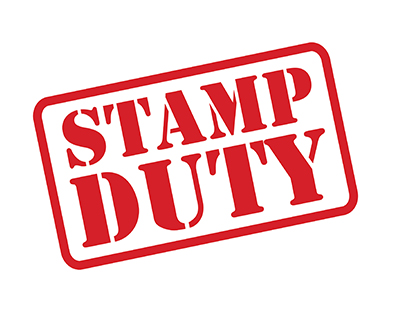In the 1702/03 financial year, Stamp Duty was considered a success, with 3,932,933 stamps embossed in England for a value of £91,206.10s.4d , roughly £18.9m today.
Reform
From December 1 2003, SDLT was introduced by the Finance Act 2003, which replaced Stamp Duty as a form of self-assessed transfer tax charged on Land Transactions.
Since then, there have been many changes to SDLT. The government has a consistent conflict between adhering to the best interests of the public and maintaining the public purse. In 2005, the SDLT threshold was raised from £60,000 to £120,000. In 2006, the threshold was raised to £125,000.
The Chancellor, George Osborne, announced reform in the 2014 Autumn Statement, whereby SDLT would be paid on the amount above certain thresholds rather than one rate on the total amount. Although the change was of benefit to 98% of property purchases, there was a collapse in sales at the upper end of the market.
Further reforms were announced a year later and effected in April 2016, where buyers of buy-to-let properties would have to pay a 3% surcharge on top of the standard rate for any price and refunded if the first home is sold within three years.
Public Opinion
To find out what the benefits of SDLT are, it is astonishing to find 18.5 million Google results returning articles such as: “How can I reduce Stamp Duty?”, “Who is eligible for Stamp Duty exemption?”, “Can I claim back on Stamp Duty?” and “Six ways to legitimately avoid Stamp Duty”, which included, “Haggle on the property price, transfer a property, buy out your ex, pay for fixtures and fittings separately, or build your own.”
Unable to find at least one article that outlined the benefits of a tax in effect for over three hundred years, what is apparent is a cry for relief or reform, and not the reforms the government have tried to muster over the years.
In a recent article from Showhouse.co.uk, it was reported that 58% of homeowners felt that reform to SDLT is needed:
-
67% believe that the government should create a fairer taxation system.
-
23% of respondents stated that current SDLT rates prevent them from getting on or moving up the property ladder.
-
70% want to see overseas buyers pay a higher SDLT rate, while 66% agree second home purchases should carry a higher surcharge.
-
36% feel a SDLT surcharge should be introduced for less energy efficient properties.
The anxiety due to SDLT and its effect upon the housing market was further reflected in 2021, when there was a fear of sales falling through if they did not meet the initial SDLT holiday March deadline. Consequently, it was reported that the Office for National Statistics HPI (House Price Index) figures were distorted by the Stamp Duty holiday and rush to complete before the deadline.
House Purchase Decline and Socio-Economic Effects
The underlying cry from the public is clear – the only time SDLT is considered a benefit is when you are not required to pay it. The Financial Times recently reported that property transactions fell by 12% as the market began to normalise after the most recent SDLT holiday.
In LSE’s November 2017 report for the Family Building Society, SDLT was described as a levy that is “suffocating” the housing market and outlined that the socio-economic effects of the tax for first time buyers meant they had to find additional funds for the tax in addition to their deposit. The report also emphasised that SDLT impedes social and household mobility, since families decide to stay and extend their property rather than move and pay SDLT.
Potential for Alternatives
There are concerns regarding the complete eradication of SDLT because it could cause a rise in house prices in proportion with the tax eliminated.
Suggestions for alternatives to SDLT could include a form of annual property value tax, but this may not be appealing to the government. It may produce significant revenue, but it would be difficult and expensive to manage, and it may also distort economic behaviour.
Final Thoughts
It is apparent that from the days of William II and Mary II, Stamp Duty has been a source of revenue to fund the economy. It is reported that the SDLT raises more than £8 billion per annum for the Treasury, so it is logical there is a hesitancy to abolish it altogether.
Yet, it is possible to have a tax change. This has been shown with mortgage interest tax relief, which initially started with a phased reduction over thirty years, and then eventually its abolition in 2000.
The public reacted negatively as it was estimated to cost the average homeowner an extra £17.00 per month. Financial institutions such as the Council for Mortgage Lenders also said the abolition of the relief was “unfortunate” and that the cut would have been felt disproportionately in Scotland, Wales and the North of England, as opposed to London and the South East.
However, mortgage interest tax relief highlights the fact that there is administrative capacity to eliminate taxes. Deliberations for reform in respect of SDLT may help the property industry move in a positive direction if a growth in household mobility occurs due to the gradual reduction of a tax that appears to be hindering the same.
*Antonia Smith-Buckle is a Solicitor at JMW Solicitors







%20by%20Charlotte%20Jeffrey-Campbell.jpg)





.jpg)
.jpg)






.png)



Join the conversation
Be the first to comment (please use the comment box below)
Please login to comment